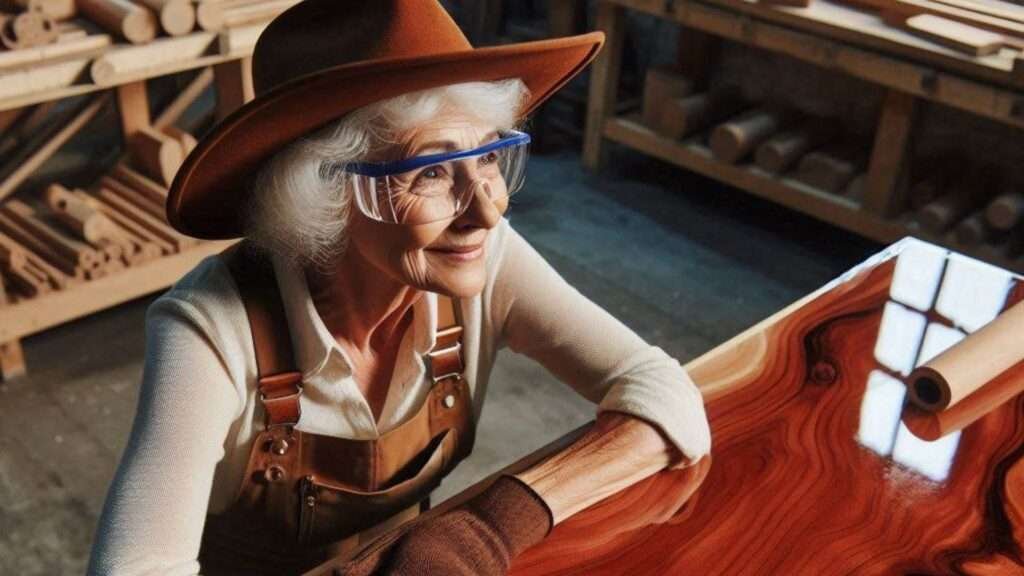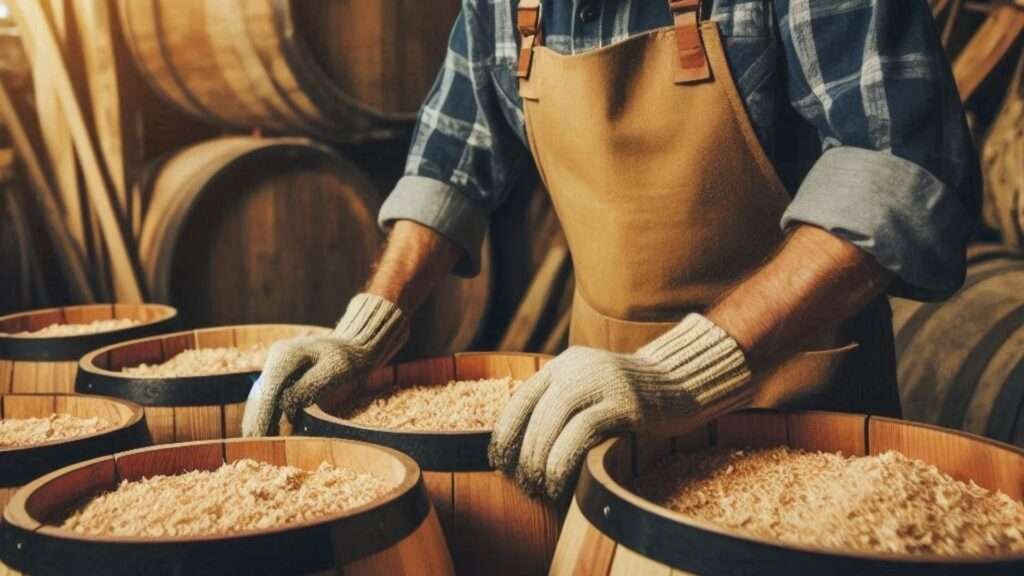A Detailed Introduction To Marine Woodworking.
Marine woodworking stands out as a unique and specialized branch of woodworking, dedicated to the construction of wooden vessels tailored for water navigation.
Unlike what we might call general or traditional woodworking, marine woodworking demands a distinct set of skills and techniques to ensure the creation of boats, canoes, and other watercraft that are not only aesthetically pleasing but also resilient to the challenges posed by aquatic environments.
From selecting the appropriate type of wood to mastering the art of waterproofing and ensuring structural integrity, marine woodworking embodies a rich tradition of craftsmanship.
One of the primary distinctions of marine woodworking lies in the materials used. Woods such as teak, oak, and mahogany are often preferred for their natural resistance to water and decay.
These materials, combined with marine-grade adhesives and finishes, help to extend the lifespan of the vessel while maintaining its functionality and beauty.
The process of selecting and preparing these materials requires a deep understanding of their properties and how they interact with water.
In addition to material selection, marine woodworking involves specialized construction techniques.
For instance, boat builders must be adept at creating watertight joints and seams. This often involves the use of traditional methods such as lapstrake or carvel planking, which have been perfected over centuries.
Modern advancements, however, have introduced new methods and materials, such as epoxy resins and fiberglass reinforcements, which enhance the durability and performance of wooden boats.
The craftsmanship involved in marine woodworking is not solely focused on functionality; it also emphasizes aesthetics.
The design and detailing of wooden boats and canoes reflect a harmonious blend of form and function, showcasing the artisan’s skill and dedication.
Whether it’s the sleek lines of a racing sailboat or the intricate carvings on a traditional canoe, each vessel is a testament to the enduring appeal of wooden watercraft.
Wooden Boat and Canoe Construction.
Marine woodworking is very much a specialized craft and it is deeply rooted in the tradition of building watercraft such as boats and canoes.
These vessels range in size and complexity, from the smaller, more agile canoes to larger, more robust boats.
Each type of watercraft serves various purposes, whether for leisure, fishing, or transport, and is meticulously crafted by skilled artisans using wood as the primary material.
The construction of wooden boats and canoes is a multi-staged process that begins with the design phase.
Here, the dimensions and specifications of the vessel are carefully planned. This includes considerations for the type of wood to be used, which often depends on factors such as availability, durability, and the intended use of the craft.
Common choices include cedar, oak, and mahogany, each offering unique properties that make them suitable for marine environments.
Following the design phase, the next stage involves the selection and preparation of the wood.
The chosen wood is then cut and shaped into various components such as the keel, ribs, and planks.
Precision and attention to detail are paramount during this stage to ensure that all parts fit together seamlessly and contribute to the overall structural integrity of the vessel.
Assembly is the next critical phase, wherein the individual components are joined together.
This typically involves techniques such as mortise and tenon joints, as well as the use of modern adhesives and fasteners to enhance durability and water resistance.
Each joint and seam is carefully sealed to prevent water ingress, which is essential for the longevity and performance of the watercraft.
The final stage of construction involves finishing touches, including sanding, varnishing, and the application of protective coatings.
These steps not only enhance the aesthetic appeal of the boat or canoe but also provide an additional layer of protection against the elements.
The result is a beautifully crafted vessel that combines functionality with timeless craftsmanship.
Wood remains a preferred material in marine woodworking due to its natural buoyancy, workability, and aesthetic qualities.
Despite the advent of modern materials like fiberglass and aluminum, wood continues to be cherished by enthusiasts and craftsmen alike for its traditional and enduring appeal.
A Blend Of Traditional and Modern Woodworking Techniques.
Marine woodworking is a distinctive craft that harmonizes age-old methods with contemporary advancements.
Traditional techniques, such as lapstrake construction, have been utilized for centuries, dating back to the Viking era.
This method involves overlapping planks, which are then fastened together, creating a lightweight yet sturdy framework.
The Sassafras 12 canoe exemplifies this approach, effortlessly merging historical practices with modern innovations.
The introduction of Chesapeake Light Craft’s LapStitch™ building method has revolutionized the field of marine woodworking. LapStitch™ combines the precision of computer-aided design with the traditional lapstrake construction, facilitating a more accessible and streamlined process for enthusiasts and beginners alike.
By using pre-cut wooden panels and a systematic assembly process, this technique minimizes the complexities traditionally associated with boat building, without compromising on the integrity and aesthetic of the finished product.
The historical significance of these techniques cannot be overstated. Traditional marine woodworking methods have stood the test of time, showcasing the ingenuity and craftsmanship of early boat builders.
These methods were developed not merely out of necessity, but also as a testament to the artisan’s skill and understanding of the materials at hand.
The evolution of these methods, influenced by modern technology, underscores the enduring appeal and adaptability of marine woodworking.
Modern adaptations, such as the LapStitch™ method, make marine woodworking more accessible to novices.
By simplifying the construction process and providing detailed instructions, these innovations empower individuals to embark on their own boat-building journey.
The blend of traditional craftsmanship with modern techniques ensures that the rich heritage of marine woodworking continues to thrive, while also inviting a new generation of enthusiasts to explore this unique craft.
Lightweight Design in Marine Woodworking.
Creating lightweight yet sturdy vessels is a central focus in marine woodworking.
The art of balancing weight and strength is paramount for ensuring that boats and canoes are both easy to handle and robust enough to carry significant loads.
This delicate balance is achieved through a combination of materials selection, engineering principles, and meticulous craftsmanship.
The Sassafras 12 canoe serves as an exemplary model of lightweight marine design. Weighing just a fraction of traditional wooden canoes, the Sassafras 12 is crafted using modern techniques that maximize strength while minimizing weight.
The use of marine-grade plywood, hardwoods, and advanced epoxy resins allows builders to create a structure that is both durable and light.
Marine-grade plywood, in particular, offers an excellent strength-to-weight ratio, providing the necessary rigidity without the bulk.
Engineering principles play a crucial role in this process. The structural integrity of the vessel is maintained through strategic placement of bulkheads and stringers, which provide additional support without adding excessive weight.
These internal frameworks distribute stress evenly across the hull, enhancing the canoe’s overall stability and performance.
Additionally, the streamlined hull design reduces drag, making it easier to paddle and maneuver.
Another critical aspect of lightweight design in marine woodworking is the choice of joinery techniques.
Strong, lightweight joints such as scarf joints or lapstrake construction are often employed. These methods not only ensure a tight fit between components but also contribute to the overall aesthetics of the vessel.
Furthermore, modern adhesives and sealants enhance the strength of these joints, providing a watertight and resilient structure.
Ultimately, the goal of lightweight marine woodworking is to produce a vessel that meets the demands of both functionality and performance.
By carefully selecting materials, applying sound engineering principles, and employing skilled craftsmanship, woodworkers can create boats and canoes that are a joy to handle on the water.
Variety of Wood Types Used With Marine Woodworking.
Marine woodworking is a specialized craft that demands careful selection of wood types, each chosen for its unique properties and suitability for aquatic environments.
Among the most popular choices is cedar, particularly for strip-built canoes. Cedar’s lightweight nature, combined with its resistance to rot and decay, makes it an ideal candidate for watercraft construction.
Its fine grain and workability further enhance its appeal, allowing craftsmen to shape and mold the wood with precision.
Another frequently used wood in marine woodworking is mahogany. Known for its durability and resistance to moisture, mahogany is often employed in the construction of larger boats where strength and longevity are paramount.
Its dense grain structure adds to its robustness, making it less prone to warping and splitting. Additionally, mahogany’s natural oils provide a barrier against marine organisms, further preserving the integrity of the vessel.
Teak is renowned in the marine industry for its exceptional endurance in harsh aquatic conditions.
This wood is highly favored for decking and exterior surfaces due to its natural oil content, which offers superior protection against water infiltration and UV damage.
Teak’s ability to withstand the corrosive effects of saltwater without significant deterioration makes it an invaluable resource in boat building.
For those seeking a balance between weight and strength, marine plywood, often made from tropical hardwoods, presents a versatile option.
It combines multiple layers of thin wood, bonded together with waterproof adhesive, to create a material that is both strong and lightweight.
This engineered wood is less susceptible to the swelling and shrinking that can plague solid wood, ensuring the longevity and stability of the craft.
The decision-making process in selecting wood for marine woodworking involves a careful analysis of these properties.
Factors such as the intended use of the boat, exposure to elements, and desired longevity all play crucial roles.
By understanding the unique attributes of each wood type, craftsmen are able to build watercraft that are not only functional but also enduring, ensuring that each vessel can navigate the waters with confidence and grace.
Marine Woodworking Kits and Build Plans.
Marine woodworking kits and plans present an accessible and structured path for enthusiasts to embark on the journey of crafting their own wooden boats and canoes.
These kits and plans cater to a wide array of skill levels, from beginners eager to learn the fundamentals to seasoned woodworkers looking for a challenging project.
By offering detailed guides and pre-cut materials, they significantly simplify the complex process of marine woodworking.
There are primarily two types of marine woodworking kits: complete kits and partial kits.
Complete kits are comprehensive packages that include all the necessary materials, such as high-quality marine plywood, epoxy resin, fiberglass cloth, and pre-cut wooden parts, along with detailed instructions.
These kits are particularly beneficial for beginners, as they provide everything needed to construct a boat or canoe from start to finish, minimizing the need for additional purchases or specialized tools.
Partial kits, on the other hand, offer more flexibility by providing essential components like pre-cut wooden parts and plans, but leaving material sourcing and some decision-making to the builder.
This type of kit is ideal for experienced woodworkers who prefer to select their own materials or already possess certain supplies.
It allows for greater customization and often results in a more personalized finished product.
Marine woodworking plans are another valuable resource, offering blueprints and detailed instructions for building various types of vessels.
These plans, which can be purchased independently or included in kits, typically feature precise measurements, materials lists, and step-by-step guides.
They are designed to assist both novice and expert woodworkers in creating structurally sound and aesthetically pleasing boats and canoes.
Overall, marine woodworking kits and plans democratize the art of boat building, making it accessible to a broader audience.
Whether choosing a complete kit, a partial kit, or standalone plans, enthusiasts can explore the satisfying craft of marine woodworking with confidence and clarity.
The Specialized Skills in Marine Woodworking.
Marine woodworking is a specialized craft that demands a unique set of skills, combining traditional woodworking techniques with specific knowledge pertinent to aquatic environments.
At its core, marine woodworking involves an intricate understanding of boat design principles.
These principles encompass the hydrodynamics of how boats interact with water, the weight distribution to ensure stability, and the overall structural integrity required to withstand various water conditions.
Mastery of these design principles is essential for creating functional and safe wooden boats and canoes.
In addition to design knowledge, marine woodworking requires proficiency in water-resistant joinery techniques.
Standard woodworking methods often fall short in marine applications due to the constant exposure to moisture.
Therefore, marine woodworkers employ specialized joints, such as scarf joints and lapstrake construction, which are designed to prevent water ingress and maintain the structural integrity of the vessel.
These techniques ensure that the boats remain watertight and durable over time, even in harsh marine environments.
Another critical aspect of marine woodworking is understanding the behavior of wood in aquatic environments.
Wood selection is paramount; not all types of wood are suitable for marine use. Marine woodworkers often opt for species like teak, mahogany, and cedar, known for their natural resistance to rot and decay.
Additionally, they must consider how wood expands and contracts with changes in moisture and temperature, which can affect the fit and finish of the boat.
Proper treatment and sealing of the wood are also crucial to protect it from the elements and extend the lifespan of the vessel.
Training and experience are vital to mastering marine woodworking. Many craftsmen undergo apprenticeships or formal education programs to gain the necessary skills.
Hands-on experience is invaluable, as it allows woodworkers to develop a keen eye for detail and a deep understanding of the materials they work with.
Continuous learning and adaptation are also important, as new techniques and materials can enhance traditional methods.
Decorative Elements and Finishing Touches.
In the world of marine woodworking, the balance of functionality and aesthetic appeal is critical, which is why decorative elements and skilled finishing touches are necessary.
While the structural integrity of wooden boats and canoes ensures their reliability on water, the decorative elements and finishing touches elevate their visual and emotional impact.
Marine Woodworkers meticulously integrate aesthetic features to reflect both traditional craftsmanship and contemporary tastes.
Intricate carvings, inlays, and custom paintwork are just a few of the techniques employed to impart a unique character to each vessel.
One of the most revered decorative techniques in marine woodworking is the art of marquetry, which involves creating intricate patterns and images using thin veneers of wood.
These veneers, often sourced from exotic wood species, are carefully cut and assembled into elaborate designs that adorn the decks and cabins.
Similarly, inlays of contrasting wood or other materials, such as mother-of-pearl or brass, are used to create decorative motifs and borders that enhance the visual appeal of the watercraft.
Finishing touches play a pivotal role in not only beautifying but also protecting the wooden surfaces.
Varnishing is a traditional method employed to bring out the natural grain and color of the wood while providing a durable, water-resistant coating.
Modern marine varnishes offer UV protection, which helps in preventing the wood from fading and degrading under prolonged exposure to sunlight.
Additionally, various oils and sealants are used to nourish the wood, maintaining its luster and extending its longevity.
Another critical aspect of finishing is the application of paint. Marine-grade paints are specially formulated to withstand the harsh marine environment, offering protection against saltwater, algae, and other elements.
Paint allows for a broader expression of creativity, enabling craftsmen to personalize each boat or canoe with vibrant colors and intricate designs.
Custom paint jobs can range from classic nautical themes to contemporary abstract art, depending on the owner’s vision and the artisan’s skill.
Ultimately, the decorative elements and finishing touches in marine woodworking are where craftsmanship meets artistry.
These details not only enhance the beauty of wooden watercraft but also contribute to their durability and resistance to the challenging conditions they face.
By combining functionality with meticulous attention to detail, marine woodworkers create pieces that are both practical and visually captivating, ensuring that each boat or canoe is a true work of art.
Beyond Functional Boats and Canoes: Decorative Models.
Marine woodworking extends its artistry beyond the creation of full-sized, functional boats and canoes.
Among the diverse expressions of this craft, the manufacturing of decorative or replica models stands out.
These intricately designed miniature wooden canoes and boats, often used for display purposes, are a testament to the skill and dedication involved in marine woodworking.
The appeal of these decorative models lies in their ability to capture the essence of their full-sized counterparts while offering a more accessible and manageable form of marine craftsmanship.
Enthusiasts and collectors alike appreciate the detailed craftsmanship and historical fidelity that these miniature models represent.
Whether it is a small wooden canoe or a replica of a historic sailing ship, each model serves as a tribute to the rich tradition of naval architecture and marine engineering.
Creating these decorative models requires a distinct set of skills. While the principles of woodworking remain consistent, the scale and precision required for miniature models present unique challenges.
Artisans must possess a keen eye for detail, as even the smallest imperfection can detract from the overall authenticity of the model.
Additionally, marine woodworkers must be adept at using specialized tools designed for fine, intricate work.
Techniques such as precise cutting, sanding, and finishing are essential to achieve the high level of detail that these models demand.
Moreover, an understanding of historical and contemporary boat designs is crucial.
Authenticity plays a significant role in the appeal of decorative models, and marine woodworkers often conduct extensive research to ensure accuracy in their creations.
This includes studying historical blueprints, photographs and other references to replicate the intricate details of the original vessels accurately.
In conclusion, the creation of decorative models in marine woodworking is a refined art form that goes beyond mere functionality.
These miniature masterpieces celebrate the heritage of wooden boat building, offering a unique and captivating way to appreciate the craftsmanship and history of marine woodworking.
In summary.
Marine woodworking is a specialized craft that focuses on the creation of wooden watercraft, encompassing a range from small canoes to larger boats.
This unique field requires a distinct set of skills and techniques tailored to produce vessels capable of enduring aquatic environments.
Marine woodworking merges both traditional craftsmanship and modern methodologies, ensuring that each watercraft is not only functional but also visually appealing.
The intricacies of marine woodworking lie in its lightweight design principles and the careful selection of various wood types.
Craftsmen in this field pay meticulous attention to detail, from the initial design stages to the final finishing touches.
This dedication results in watercraft that are not only robust and durable but also embody the elegance and charm that wooden vessels are renowned for.
Marine woodworking also necessitates a deep understanding of how different woods react to water and weather conditions.
This knowledge is crucial in selecting the right materials that will provide longevity and performance.
The integration of modern techniques alongside traditional methods allows for innovation while preserving the timeless appeal of wooden boats and canoes.
Ultimately, the craft of marine woodworking is a testament to human ingenuity and a deep respect for the natural materials used.
It is an art form that marries function with beauty, producing watercraft that are as pleasing to the eye as they are capable on the water.
This blend of old and new, along with the expertise of skilled craftsmen, ensures that the legacy of wooden boat and canoe building continues to thrive and evolve.








